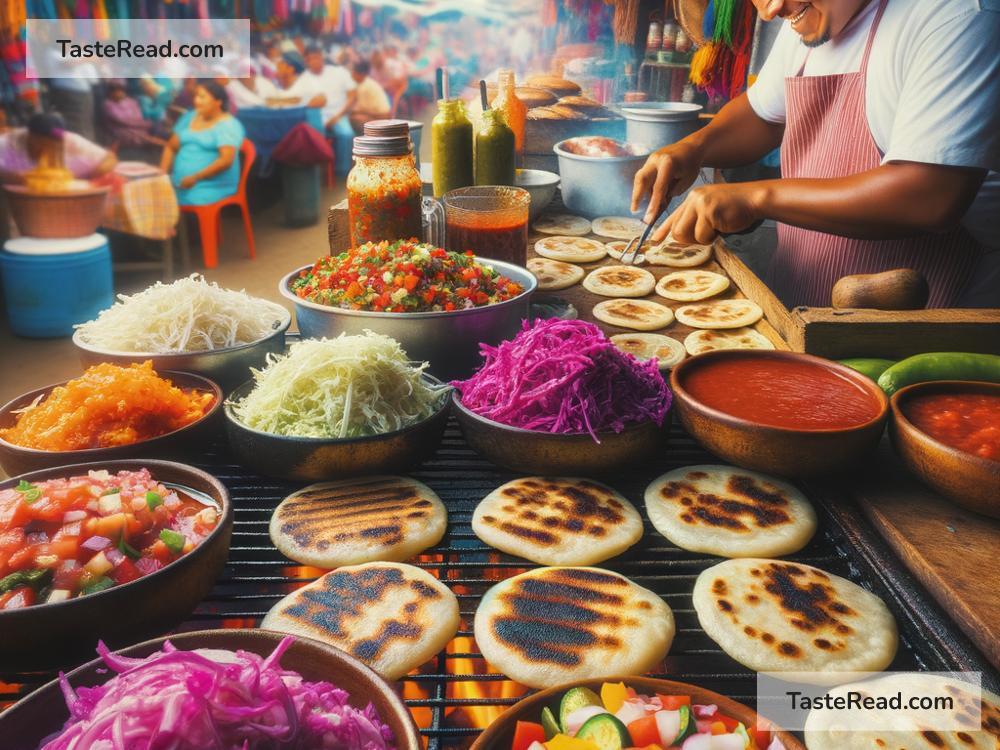Journeying Through Distinctive Central American Pupusa Traditions
Central America is a region rich with culture, history, and delicious food. One dish that stands out and has become a symbol of Central American cuisine is the humble pupusa. Pupusas are more than just food—they are a reflection of tradition and a way to connect communities. This article will take you on a journey through the distinctive pupusa traditions of Central America, with an emphasis on the flavors, history, and the cultural significance behind this beloved dish.
What Are Pupusas?
A pupusa is a thick, round tortilla made from maize (corn) or rice flour. It is stuffed with a variety of fillings like cheese, beans, or meat, and cooked until it’s golden and slightly crispy on the outside. Pupusas are traditionally served with curtido, a tangy fermented cabbage slaw, and a tomato-based sauce. The combination of flavors is simple yet incredibly satisfying, making pupusas a favorite for locals and travelers alike.
The Birthplace of Pupusas: El Salvador
El Salvador is the undisputed home of the pupusa. In fact, the pupusa is the country’s national dish, celebrated with pride and joy. It dates back centuries, rooted in indigenous traditions of the Pipil people. Originally, pupusas were made with simple fillings like beans and pumpkin seeds, but over time, the dish evolved to incorporate more diverse ingredients.
In El Salvador, there’s even a national Pupusa Day, celebrated every second Sunday in November. On this day, communities across the country gather to enjoy pupusas with friends and family, emphasizing how deeply this dish is woven into Salvadoran culture. You’ll find pupusa stands in every corner, offering staples like pupusa de queso (cheese pupusas) and pupusa revuelta (filled with cheese, beans, and pork).
One unique variation from El Salvador is the pupusa de loroco, which features loroco, a native edible flower with an earthy and slightly nutty flavor. This creative ingredient highlights the region’s use of local resources and culinary ingenuity.
Pupusas Beyond El Salvador
While El Salvador is most famously associated with pupusas, the dish is enjoyed in neighboring countries like Honduras, Guatemala, and Nicaragua, all with their own twists to the recipe.
Honduras
Honduran pupusas are very similar to their Salvadoran counterparts, but they are often thicker and can come with more unusual fillings like scrambled eggs and plantains. In Honduras, pupusas are enjoyed for breakfast as well as other meals throughout the day. Hondurans take great pride in their pupusas, using native ingredients to craft variations that reflect their own local cuisine.
Guatemala
In Guatemala, pupusas are smaller and sometimes less stuffed compared to those found in other countries. They’re often accompanied by chopped vegetables or fresh ingredients that give them a lighter touch. Guatemalan pupusas showcase the diversity of the dish, proving that there’s no “right” or “wrong” way to make them—each version brings something special to the table.
Nicaragua
Pupusas in Nicaragua are not as commonly found as in Salvadoran cuisine but are still a delightful treat loved by many. They might be served alongside other traditional dishes like gallo pinto (a rice and beans dish) or used as a simple snack for road trips or gatherings. Nicaragua’s pupusas often feature artisanal cheeses that are unique to the region, adding a distinctive flair to the dish.
Each Central American country puts its own spin on pupusas, yet the fundamentals remain unchanged: they are comforting, handmade, and inextricably tied to family traditions.
Making Pupusas: A Labor of Love
The art of making pupusas is as significant as eating them. It requires skill, patience, and a lot of care. Traditionally, pupusas are handmade, with cooks forming the dough into a ball, inserting the filling, and flattening it into a perfect disk. Watching someone make pupusas is mesmerizing—the quick movements and practiced technique demonstrate years of experience passed down through generations.
In many Central American households, making pupusas is a communal activity. Families gather in their kitchens, sharing stories and laughs while preparing the meal. For many, the process is about more than food—it is an expression of love, tradition, and unity.
Pupusas Around the World
Over the years, pupusas have gained international popularity due to Salvadoran communities spreading their culture far and wide. In cities across the United States, Canada, and Europe, Salvadoran restaurants proudly serve pupusas as a way to share their heritage with the world. Many non-Salvadorans have embraced the dish, drawn to its hearty flavors and simplicity.
With global exposure comes creativity, and you’ll find pupusas stuffed with modern fillings like spinach, mushrooms, or barbecue chicken in many international eateries. Despite these innovations, the essence of the pupusa remains timeless.
Conclusion: A Cultural Treasure
Pupusas are more than just a meal—they are a cultural treasure that brings people together. From street corners in El Salvador to dining tables in Honduras, pupusas reflect the warmth and hospitality of Central America. Traveling through distinctive pupusa traditions is a journey of flavor, history, and family values.
Whether you enjoy them in Central America or in a Salvadoran restaurant near you, every bite of a pupusa carries with it the legacy of a region that takes pride in its food and traditions. So, grab a pupusa, savor its rich heritage, and celebrate the simple joy it brings to the world!


